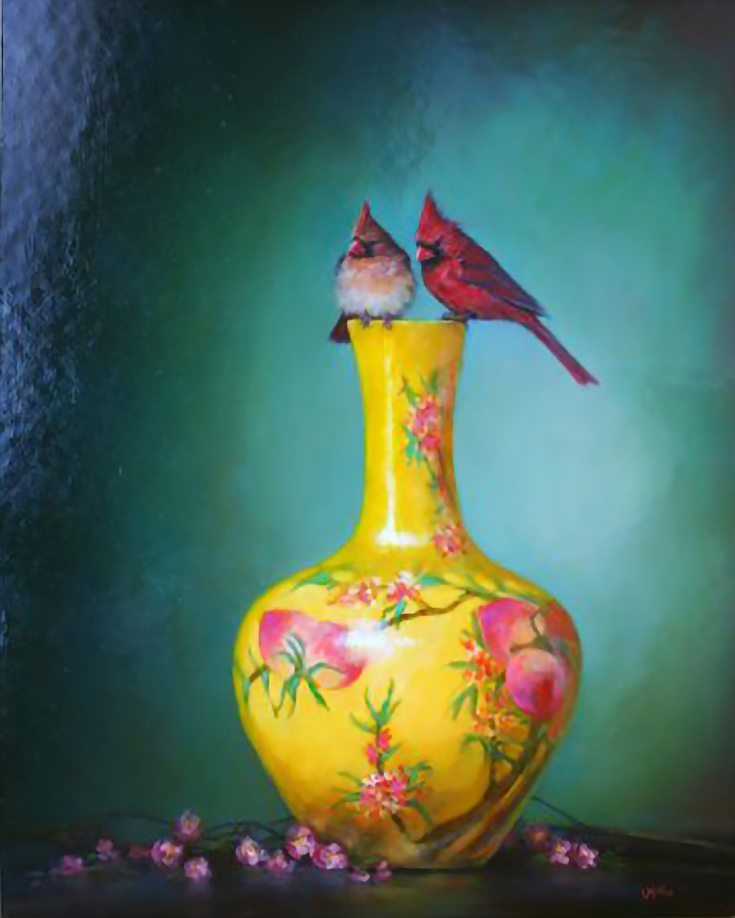I’m a problem solver. . .
If a basically good painting has not found an owner within a year, I like to take it home for an evaluation and some reworking.
Some of you might gasp at the thought of taking an unsold painting out of the gallery and back into the studio to rework it. . . but famous artists like Van Gogh and Wyeth recycled canvases all the time by painting over their earlier works.
Here’s one of mine that has undergone a few changes, for the better:
After this painting was critiqued, I/we felt that Peach-face Lovebirds on Peach Vase was too sweet.
So I murdered the little lovebirds (replacing them with a Cardinal pair), exchanged the daisies for peach blossoms, and gave it a new name: Peach Blossoms & Cardinals.
The improvements helped. In my still life show last year, the reworked painting almost sold. It had a hold on it, but then no one else showed an interest in the painting so I brought it home.
After another long look, I decided that the birds were to “light” compared to the weight of the yellow vase. I also didn’t like the turquoise background—it was too strong.
Perhaps “third time’s the charm” because this final painting is much stronger.
Why? The colorful, single parrot atop the vase brings the right color and balance to the composition. The pose is strong and interesting. The grapes at the bottom of the painting anchor the piece, repeat the reds and make sense with the parrot.
This painting is now in my Florida gallery where it should find a happy home!
Here are 4 tips to help you critique your own work:
1. Ask your kids, family members or friends for an “honest” critique (don’t worry about your feelings at this point!) Kids are sometimes the best critics—and yes, often brutally honest!
2. Hang the painting in a living-room or bedroom and see how it stands up against the furnishing, etc.
3. Take the painting out of the frame. Prop it up in the studio and study the composition and color. How is the technique? How is the brushwork? Can any of those things be improved?
4. Ask yourself, “Is the painting in the wrong gallery or market place? Is the economy at fault? Or is it just the painting?”
Most of all, don’t be too timid to dive in and change a painting for the better! Remember, this is a process that has been used by many art masters before us.
Robert Bateman, the famous wildlife artist gave me some related advice on this subject. (He’s also the one who taught me how to paint birds!)
Bob said, “Don’t let anything be too precious.”
And he’s right. If we are not willing to experiment, take risks and let go, we will have a hard time growing as artists.
For more tips and resources from Lori McNee, please visit her blog, Fine Art Tips.
This post may contain affiliate links.



